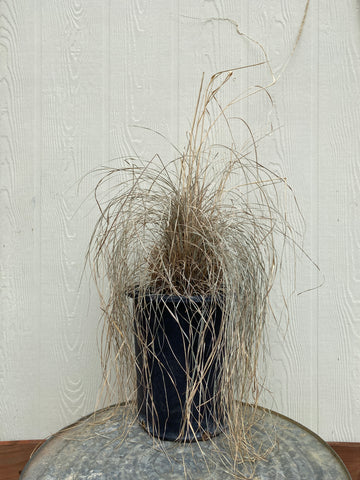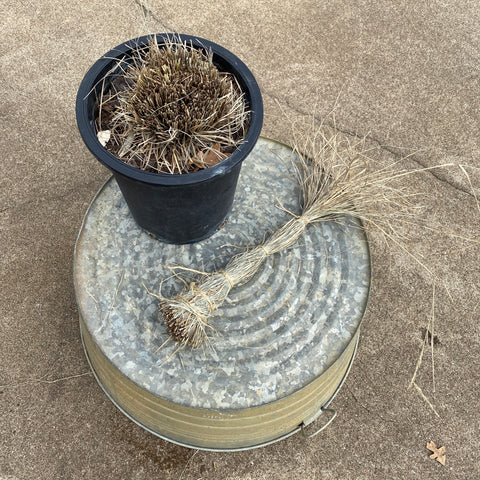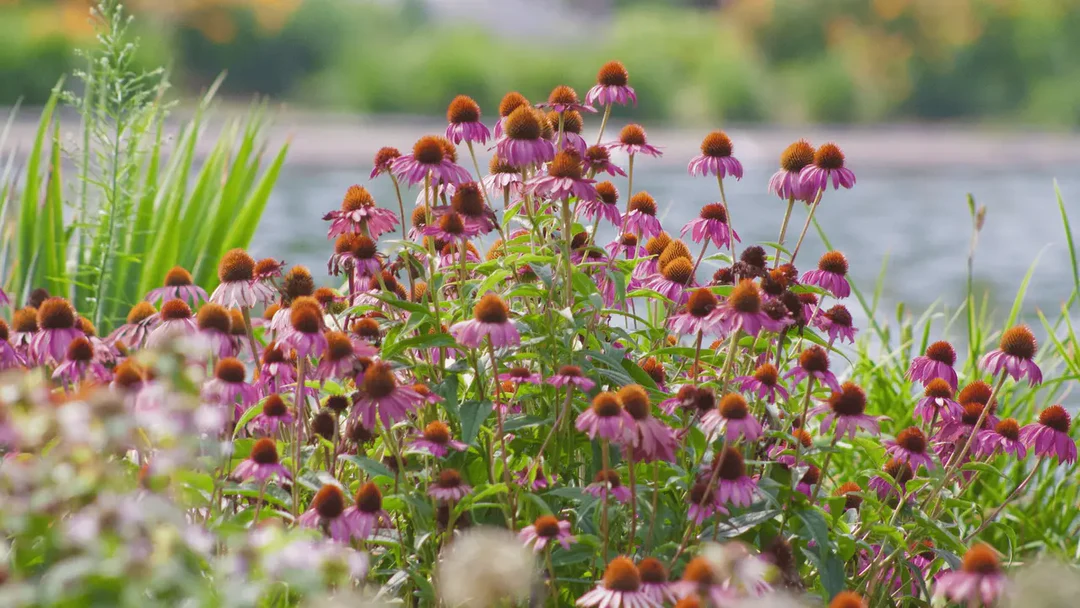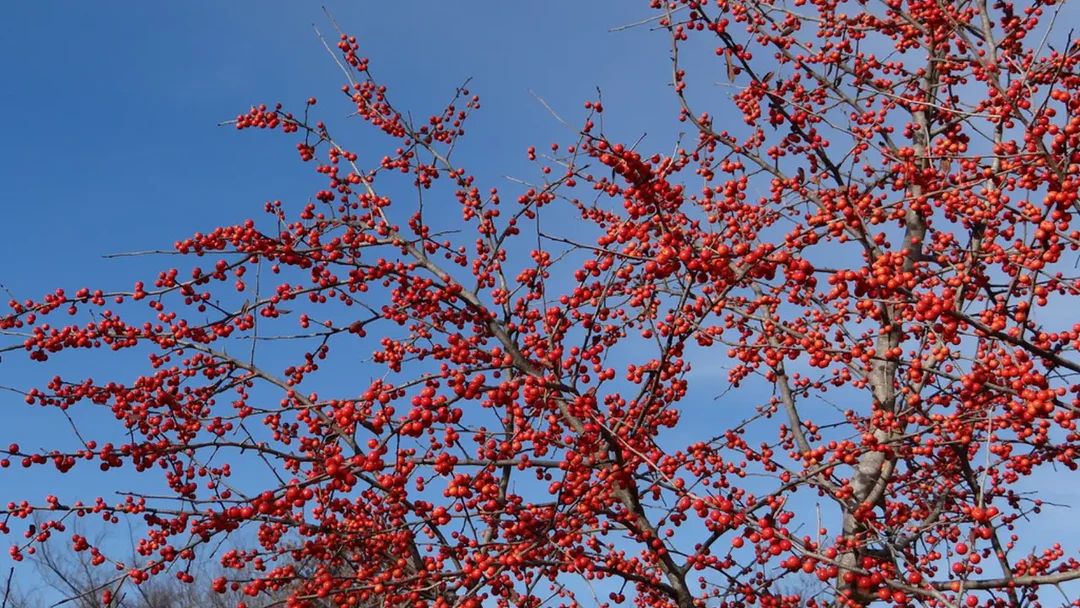Trimming Native Grasses: How Do I Do It?

One of the things we love most about Native Grasses is their winter presence long after the landscape has died back. They add a beautiful structure to the garden, and their golden color is gorgeous in the low winter sun.
For this reason, we recommend waiting until early spring to cut back your grasses in preparation for summer growth. The new development of spring bloomers will cover the grasses nicely until they begin to fill out and add to your landscape. However, if you're anything like us and can't wait to start planting for spring, you can cut grasses back anytime between Fall-Spring.
 Begin by cutting your grasses back by 2/3. Use string or rope to gather the grasses and snip just below, and you now have grasses for decoration or use in floral arrangements. You may need to employ a weed eater or larger shears for more giant grasses such as Big Muhly. Grass can be very sharp, so use gloves and plenty of caution when handling.
Begin by cutting your grasses back by 2/3. Use string or rope to gather the grasses and snip just below, and you now have grasses for decoration or use in floral arrangements. You may need to employ a weed eater or larger shears for more giant grasses such as Big Muhly. Grass can be very sharp, so use gloves and plenty of caution when handling.
 If you're looking to expand on established grasses, this is also a perfect time for dividing and transplanting. When digging up to trim out dead growth or create new transplants, start by digging up the entire ball of grass.
If you're looking to expand on established grasses, this is also a perfect time for dividing and transplanting. When digging up to trim out dead growth or create new transplants, start by digging up the entire ball of grass.
 Remove and discard the "dead" center portion to the compost pile. Only utilize sections of the newer outer growth area for replanting. Using a shovel, slice off parts of the outer rings and replant.
Remove and discard the "dead" center portion to the compost pile. Only utilize sections of the newer outer growth area for replanting. Using a shovel, slice off parts of the outer rings and replant.
The larger the slice, the larger the first-year plant will be. Simple replant wherever needed, and as spring warms, the plants will shoot up new growth.
You will be surprised how many "new" plants you can start from an old clump.

Lastly a shout out to our favorite natural landscaping twine: Sisal Twine. Its biodegradable, wild animals like to steal loose bits, and its composable. Doug's grandma got him to start using it when they would garden together, and he's been using it ever since. The only downside is that its not load bearing. Aka, this isn't a climbing twine, but its great for bundling everything in the garden and fixing vines to trellises.












Leave a comment